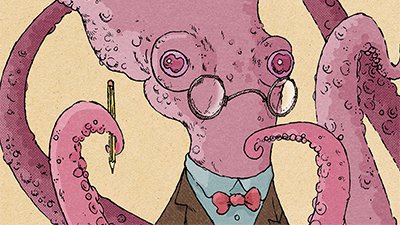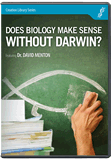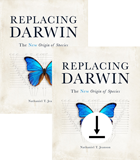
Why Do Humans Differ from Animals in Courtship and Sexual Dimorphism?
What does the animal kingdom tell us about relationships between the sexes?
Typically with animals, especially birds (e.g., peacocks), the male is more beautiful and is intended to attract the female; however, with humans, the case is usually the opposite. The female attempts to look nice and attract the male. Why is this?
—E. C.
Hello, E. C. Thank you for writing to Answers in Genesis.
Throughout the animal kingdom, there are many species that exhibit radically different traits between sexes, which is called sexual dimorphism. Most people are familiar with males being the bigger, more colorful, or more ornamented sex—such as in peafowl, most deer, and betta fish. Males of certain species will also exhibit aggressive or showy behaviors to attract mates, such as the flashy dances of birds of paradise, head-butting battles of bighorn sheep, and elaborate nests of white-spotted puffer fish.
But that is not always the case. Sometimes the females are bigger, more colorful, or more ornamented than males—such as in anglerfish, eclectus parrots, and most snakes. Females may also be the ones who must impress the males with their behavioral displays, such as in phalaropes (slender-necked shorebirds), topi antelope, and seahorses.
Obviously, there is a lot of variation within the animal kingdom. But why does sexual dimorphism exist? We recently published an article discussing this topic: “Survival of the Show-Offs.”
Classic evolutionary theory posits either sexual selection or the handicap hypothesis, meaning that survival of the fittest may mean survival of those with a better chance to mate and pass along their genes, regardless of their life expectancy (which may be shorter due to coloration affecting predation). Creation models posit preference genes and a possible biological tie-in between male fitness and coloration and/or ornamentation—the basis being that the God of order is also the God of beauty.
The Creator may have installed a preference gene as a means of “maintaining” beautiful features. Beauty generally gives a disadvantage in terms of escaping from predators. If a peacock lost its colours due to a gene mutation, it would suddenly find itself more protected from predators. This is an example of where a loss of information could be a great advantage in terms of survival. Therefore, it is conceivable that the Creator would deliberately create preference genes for prominent aesthetic features such as colour.1
It could be that some critical biological traits, which are fairly widespread in the animal kingdom, are genetically linked to the male genes for the exaggerated trait. To eliminate the genes for the “handicap” ornament might imperil something important for survival. In some cases, females help maintain ornamentation via “choosy” genes, and in others, males themselves maintain the genetics for ornamentation for survival reasons. By embedding the requirement for the ornament, the degree of brilliance exhibited could convey male genetic quality to suitors. The end result is the maintenance of a more beautiful (and perhaps healthier) population that fulfills the Designer’s original purpose.2
Additionally, God commands animals both in Genesis 1 during creation week and again in Genesis 8:17 after the flood to reproduce according to their kinds to fill the earth. This is a challenging command in our fallen world, as animals must overcome threats like climatic hardships, disease, famine, long and dangerous migrations, out-competition, and predation. Additionally, some animals have limited windows in which to breed, must travel far distances to find mates, or are hostile to members of the opposite sex. That is why it’s imperative for the survival of a species that the strongest survive.
Bright coloration and excessive ornamentation, such as in male peafowl and birds of paradise, seem counterintuitive to survival. Their bright colors and amplified features make them obvious to predators, but features needed to attract mates outweigh the need for camouflage. Females of these species likely see these fancy displays as proof of health and vitality, characteristics they instinctually want to pass on to their offspring. Since females consistently choose to reproduce with the flashiest males, those showy traits carry on to the next generation. In contrast, since female peafowl and birds of paradise don’t have to attract mates, but they do have to safely raise their young, the appearances of females may have been designed for camouflage rather than display. Likewise, when we see drastic size differences between males and females, it’s often in relation to their reproductive duties. For example, males of a species may be larger if it’s their duty to protect, or females may be larger if it’s their job to incubate a lot of eggs.
Now, regarding humans, God did not just leave us to the caprices of survivability—we are made in God’s image (Genesis 1:26–17).
Now, regarding humans, God did not just leave us to the caprices of survivability—we are made in God’s image (Genesis 1:26–17). We have a God-given sense of morality and are not ruled by instincts or controlled by pheromones the way animals are. We have greater intelligence than the animals and are capable of fashioning defensive and offensive weapons. But God does not want men or women battling for each other, because both sexes are made in God’s image, and battles for mates in the animal kingdom can be deadly. Instead, God created men and women to be attracted not only to beauty (or handsomeness) but also to non-physical traits.
It is also debatable (and in many cases culture-driven) that women are the ones who work to attract men. In some cultures, it is the men who wear more jewelry and ornamentation and may mark their faces with paint or tattoos in an attempt to impress potential spouses. And while it is true that most men are appreciative of women making efforts to enhance their physical beauty, men can be attracted more because of things they have in common, intelligence, nurturing abilities, personality, sense of humor, etc. Likewise, women appreciate a variety of other characteristics, such as strength and the ability to provide protection, romanticism, chivalry, cleanliness, financial stability, and so on. As the saying goes, “beauty is in the eye of the beholder,” and both men and women see beauty in many aspects of the individual, not just appearance. Conversely, both men and women see “ugliness” in many non-physical traits as well (e.g., having a quick temper, pessimism, or laziness), which can often negate the physical beauty/handsomeness of the individual.
While we often talk about love (especially the New Testament agape love) being an action (and it is) as opposed to being purely emotional, there are plenty of examples of the emotion of love for a spouse (or potential spouse) in Scripture. Examples include Adam (Genesis 2:23), Isaac and Rebekah (Genesis 24:63–67, 26:8), Boaz and Ruth (Ruth 3:18, 4:13), Esther (Esther 2:17), instruction from Solomon (Proverbs 5:15–19), and Solomon himself (Song of Solomon 1:15, 4:7–15). Although more rare in the New Testament, passages such as Romans 12:10, 2 Corinthians 2:4, 1 Thessalonians 2:7, and 1 Peter 3:8 are good examples of brotherly phileo love, which incorporates a different yet still emotional aspect. While God wants us to look on more than just physical aspects (1 Peter 3:3–4), he also wants us to lovingly behold the beauty or handsomeness of our spouse as only we can. So rather than being driven by aggression, courtship displays, or flashy ornamentation, God wants humans to have an active, serving love as well as a deeper, more reasoned, and more emotional connection with our mates, holding marriage in high esteem (Hebrews 13:4).
Footnotes
- Stuart Burgess, “The Beauty of the Peacock Tail and the Problems With the Theory of Sexual Selection,” TJ 15, no. 2 (August 2002): 94–102, https://answersingenesis.org/natural-selection/peacock-tail-beauty-and-problems-theory-of-sexual-selection/.
- David Woetzel, “The Origin of Beauty: Contrasting the Handicap Hypothesis and Design Theory,” Answers Research Journal 10 (December 13, 2017): 285–292, https://answersresearchjournal.org/origin-beauty-handicap-hypothesis-design/.
Recommended Resources

Answers in Genesis is an apologetics ministry, dedicated to helping Christians defend their faith and proclaim the good news of Jesus Christ.
- Customer Service 800.778.3390
- © 2024 Answers in Genesis






